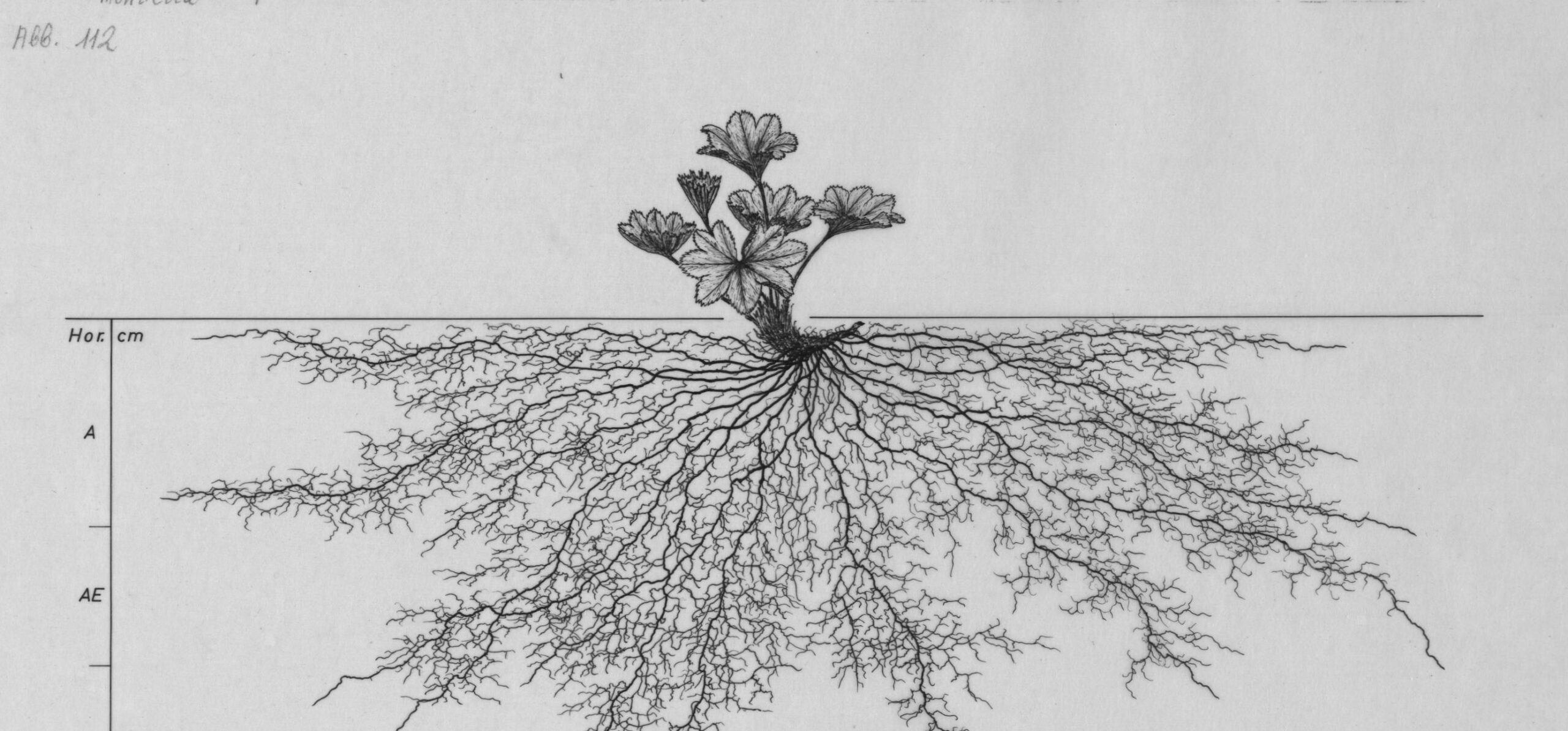The collection is the Root Atlas, by Austrian scientist Lore Kutschera (1917-2008). The atlas was featured in the Washington Post this weekend. The unique collection of 1002 drawings of root systems was digitised and made accessible online with WUR funding. Soil expert Klaas Metselaar is one of the driving forces behind this project.
Metselaar became familiar with Kutschera’s work during his PhD. The books, of which she made seven, are property of the Forum library. Metselaar thought it would be wonderful to unlock this collection in all of its glory. When funding became available in 2006, the opportunity arose.
Kutschera is a real classic scientist. She is one of my personal heroes
Klaas Metselaar , Soil Physics and Land Management
‘To my surprise, Kutschera was still alive. At the time, she was almost ninety’, Metselaar recounts. He went to visit her in Klagenfurt with a friend. ‘We sat on a run-down couch and were subjected to an exam of sorts. She wanted to know what we knew about roots.’ The Wageningen scientists passed the ‘exam’, after which it transpired that Kutschera was delighted with the plan to have all of her drawings scanned.

‘She devoted her entire life to digging up roots’, Metselaar says. ‘She continued her work for 40 years with the help of two assistants of the small Pflanzensoziologisches Institut. Kutschera is a real classic scientist. She is one of my personal heroes.’ Scientist/illustrator Erwin Lichtenegger made beautiful ink-drawings of the roots.
The work was published in the form of root atlases. Save for one, the books are no longer available, but, thanks to WUR funding, they are now accessible online. And there is a huge amount of interest. The coverage in the Washington Post resulted in over 50,000 visits over the weekend.
“Rembrandts”
Metselaar equates the work with ‘nothing less than Rembrandts’. ‘Really. The beauty is that Kutschera continued systematically to have the drawings made in black and white, and did not switch to photography. This provides us with a consistent overview of root systems in seven atlases. Although some criticism is possible. Two-dimensional drawings were made of a three-dimensional system. How was this done? Without further information, it is impossible to translate the image back into 3D.’
Discourse is needed on the scientific value of the collection, according to Metselaar. ‘Is this more than a curiosity? Never has a systematic relationship been established between her work and other root-research. How can this work be linked to other, perhaps a little less unusual, methods of research? Digging up and rinsing out roots is hard labour. Did you manage to get all of it? Roots are, after all, the hidden half of the plant.’

 Hairy lady’s mantle (Alchemilla monticola)
Hairy lady’s mantle (Alchemilla monticola)
Magnificent drawings indeed! For root growth in action happy to share one of our most recent time lapse clips:
Arabidopsis time-lapse https://vimeo.com/507434008